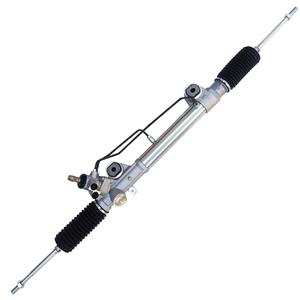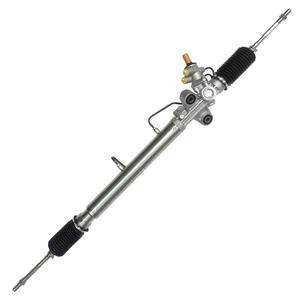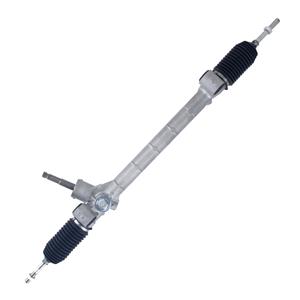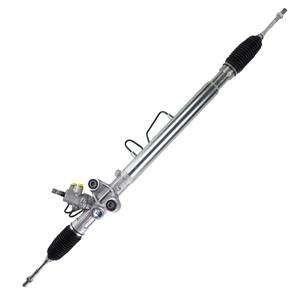Electric and hydraulic power steering rack failure: Which is more dangerous?
The car steering system is an important component to ensure that the driver can effectively and accurately control the vehicle, and the steering rack, as a key component of the steering system, plays a vital role in the steering process. With the continuous advancement of automobile technology, electric steering systems have gradually replaced traditional hydraulic steering systems.
Electric power steering racks and hydraulic power steering racks each have their own unique design and working principles, and the dangers of the two when facing steering rack failure are also different.
This article will analyze the manifestations, causes, consequences and dangers of electric power steering rack failure and hydraulic power steering rack failure from multiple perspectives to provide a more comprehensive and professional understanding for the majority of car owners and related personnel.
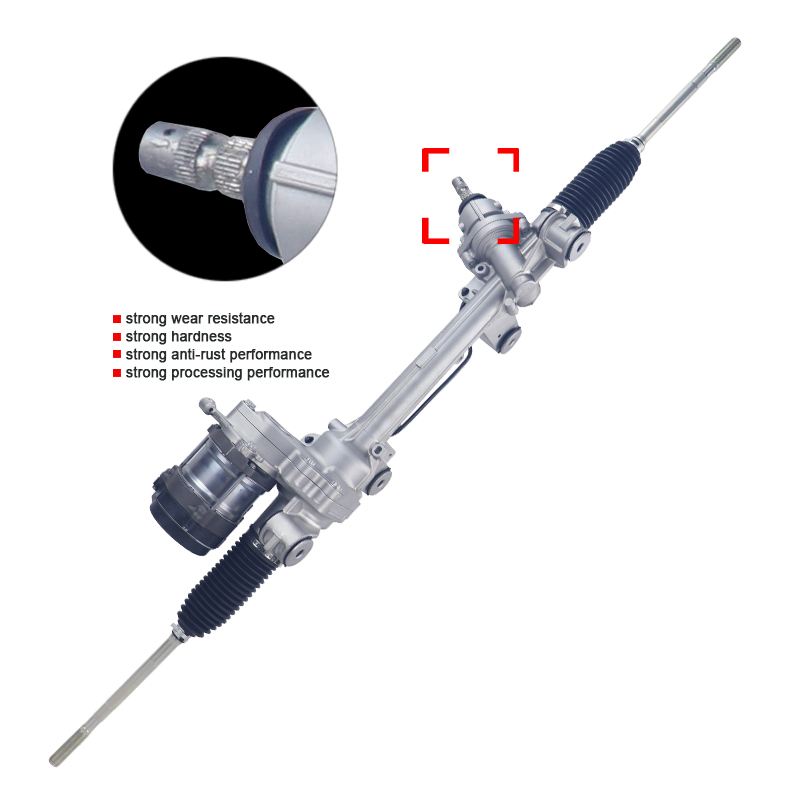
Electric and hydraulic power steering rack: What is the difference?
1. Working principle of electric power steering rack
Electric power steering rack is a steering system that provides power assistance through an electric motor. In the electric steering system, the electric motor is responsible for providing the necessary power assistance to the steering wheel, making it easier for the driver to steer. The electric power steering rack transmits the power of the electric motor to the steering wheel through a precise gear mechanism, and drives the wheels to rotate through the movement of the rack.
One of the advantages of the electric power steering system is that it can automatically adjust the power assist according to the vehicle speed, providing greater power assist at low speeds to reduce the burden on the driver; while at high speeds, the electric steering system automatically reduces the power assist to maintain the stability of the vehicle. The electric power steering rack does not rely on the hydraulic system, so its structure is simpler and more energy-efficient, while helping to reduce the weight of the vehicle.
2. Working principle of hydraulic power steering rack
The hydraulic steering system uses hydraulic oil to provide steering assistance through pumps and hydraulic cylinders. In the hydraulic power steering rack, the hydraulic pump is responsible for pressurizing the hydraulic oil to the hydraulic power assist system of the steering rack to increase the power assist when the driver turns the steering wheel. In the hydraulic system, the size of the power assist is closely related to the flow and pressure of the hydraulic oil. The hydraulic pump and hydraulic pipeline in the system keep the liquid flowing to ensure that the steering system can work smoothly.
The advantage of the hydraulic steering system is its strong power assist output, which is suitable for situations where a large steering force is required, especially in heavy vehicles or high-power models. However, the hydraulic system is relatively complex, including hydraulic pumps, oil pipes, oil tanks and other components. It is necessary to check the status of the hydraulic oil regularly to ensure that the oil is clean and sufficient.
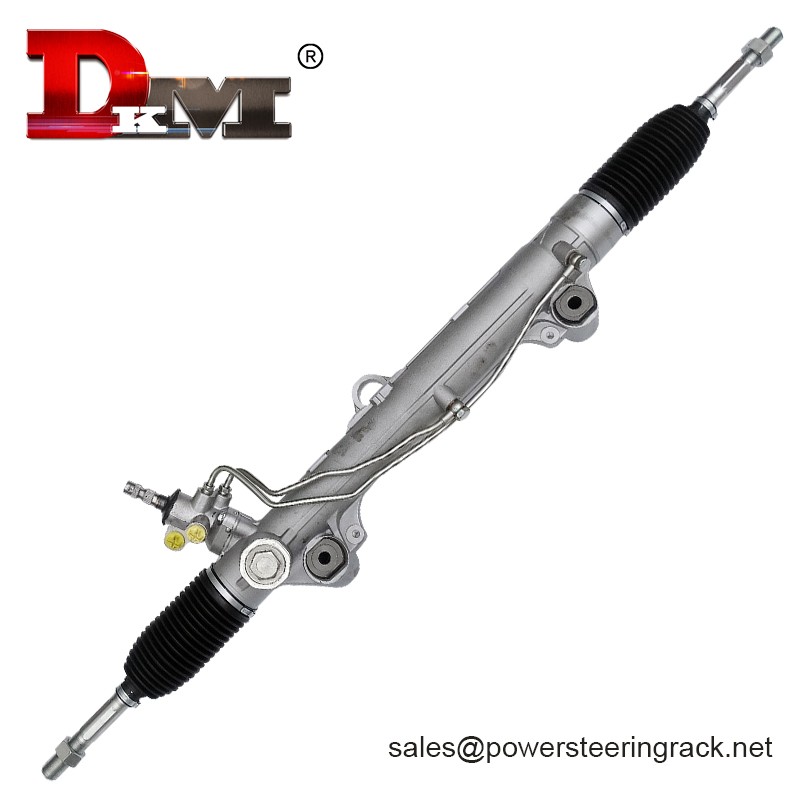
Electric and hydraulic power steering rack: What are the manifestations of failure?
1. Manifestations of electric power steering rack failure
The manifestations of electric power steering rack failure are usually direct and obvious. Since the electric steering system relies entirely on the motor to provide power assistance, when the electric power steering rack fails, the driver often feels that the steering wheel becomes unusually heavy. Common failure manifestations include:
● Steering wheel is too heavy: When the electric power steering rack fails, the motor cannot provide power assistance normally, making it extremely difficult to turn the steering wheel.
● Power assistance disappears: If the motor or electronic control system of the electric power steering rack fails, the driver will not be able to obtain any power assistance, or even the steering wheel will completely lose power assistance, making it very difficult to operate.
● Steering wheel vibration or abnormal noise: When the electric power steering rack fails, some vehicles may experience steering wheel vibration or abnormal noise, especially when steering at low speeds.
● Warning light on: Modern cars' electric steering systems are usually equipped with a fault diagnosis system. When a problem occurs, the electric steering warning light on the dashboard will light up to remind the owner that the system is faulty.
2. Failure of hydraulic power steering rack
The failure of hydraulic steering system is different from that of electric steering system. When hydraulic power steering rack fails, the driver usually encounters the following situations:
● Heavy steering: When the hydraulic steering system fails, the flow of hydraulic oil is blocked or there is a problem with the hydraulic pump, causing the steering wheel to turn very heavy, especially when driving at low speeds.
● Unstable steering power: Failure of the hydraulic pump in the hydraulic system may cause unstable power output. The driver will feel that the steering power of the steering wheel is strong and weak, affecting driving stability.
● Hydraulic oil leakage: If the pipeline or hydraulic cylinder of the hydraulic system fails, the hydraulic oil may leak, causing the system to fail, accompanied by obvious hydraulic oil stains or oil leakage.
● Abnormal noise: When the hydraulic pump is not working properly, it may make abnormal noise, especially when you hear a "squeak" or "grunt" sound when turning the steering wheel.
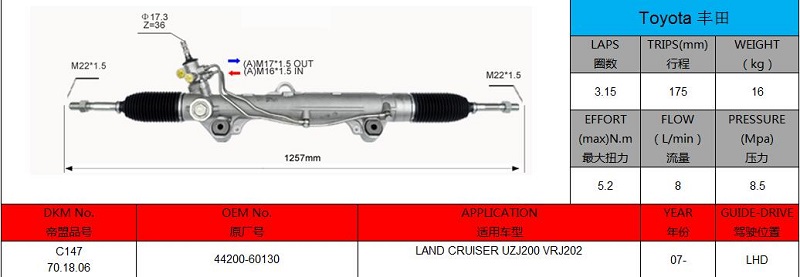
Electric and hydraulic power steering racks: what are the causes of failure?
1. Causes of failure of electric power steering racks
The causes of failure of electric power steering racks are usually related to the failure of components such as motors, sensors, and electronic control systems. Common causes of failure include:
● Motor failure: The motor in the electric power steering rack is the core component that provides power assistance. If the motor is damaged due to brush wear, circuit failure, or overload, the power assistance system will not work properly.
● Sensor failure: Electric steering systems are usually equipped with a variety of sensors, such as steering angle sensors, vehicle speed sensors, etc. Sensor failure will cause the system to be unable to accurately calculate the required steering assistance, which will affect steering performance.
● Electrical connection problems: Electric power steering racks rely on stable electrical connections. If the wires are in poor contact or there is a power supply problem, the motor may not function properly, causing the system to fail.
● Control unit problems: When the control unit of the electric steering system fails, it may cause the steering assistance to be unstable or completely fail.
2. Causes of failure of hydraulic power steering racks
The causes of failure of hydraulic power steering racks are usually related to hydraulic system components such as hydraulic pumps, hydraulic oil, and pipelines. Common causes of failure include:
● Hydraulic pump failure: The hydraulic pump is a vital component in the hydraulic steering system. If the hydraulic pump fails, the hydraulic oil cannot flow, resulting in the disappearance of steering power.
● Insufficient or contaminated hydraulic oil: The hydraulic oil in the hydraulic system must be kept in sufficient quantity and cleanliness. If the hydraulic oil leaks or is contaminated, the hydraulic system cannot work properly, resulting in insufficient steering force or complete failure.
● Pipeline leakage: If the pipes, joints and other components in the hydraulic system are broken or loose, hydraulic oil leakage will cause insufficient system pressure, resulting in failure of the power steering system.
● Hydraulic cylinder failure: Damage to the hydraulic cylinder may cause unstable or complete failure of the power steering output in the hydraulic system.
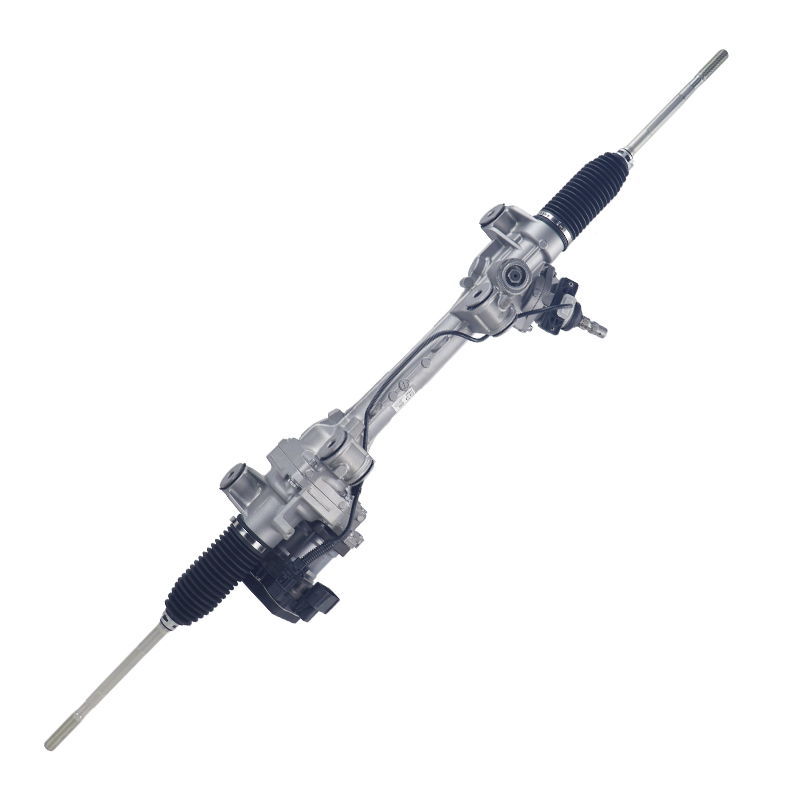
Failure of electric and hydraulic power steering racks: Which is more dangerous?
Failure of electric power steering racks and failure of hydraulic power steering racks will have a serious impact on the steering performance of the car, but the two are different in terms of performance and danger after failure.
1. Dangers of electric power steering rack failure
When the electric power steering rack fails, the driver may immediately feel the heaviness of the steering wheel, especially when driving at low speeds, and steering without power assistance may become extremely difficult. After losing the steering power, the driver's controllability will be greatly affected, especially in emergency situations, which may lead to the inability to perform steering operations in time, thereby increasing the risk of traffic accidents. In addition, after the electric power steering rack fails, the driver cannot restore normal operation by adjusting the electronic control unit, and usually needs to replace the entire electric power steering rack system, which also means that the repair cost is high.
2. Dangers of hydraulic power steering rack failure
When the hydraulic power steering rack fails, although the driver will also encounter the problem of heavy steering, the hydraulic steering system usually still retains a certain amount of mechanical power assistance. Even if the hydraulic system fails, the driver can still rely on manual force to turn the steering wheel, although it is difficult, but generally it will not completely lose controllability. However, when the hydraulic power steering rack fails, it may cause hydraulic oil leakage or abnormal noise, which will pose a potential threat to the safety of the vehicle. Especially if it is not handled for a long time, the hydraulic system may have more serious failures, which may eventually lead to a complete loss of power assistance. Therefore, failure of the hydraulic power steering rack may also bring greater safety risks, especially when driving at high speeds.
Failure of both the electric power steering rack and the hydraulic power steering rack will have a significant impact on the driver's steering control ability, but the two differ in the performance, causes and difficulty of repair after the failure. Failure of the electric power steering rack is usually manifested as heavy steering or complete loss of power assistance, and repairs usually require the replacement of the entire system, which has a high repair cost. Failure of the hydraulic power steering rack may cause steering failure due to hydraulic oil leakage or pump failure. Although the driver can still control with a certain amount of force, if it is not repaired in time, it may also increase safety risks.
In general, the impact of the failure of the electric power steering rack on the vehicle's controllability after the loss of power assistance is more direct and serious, and it is usually more dangerous. Therefore, car owners need to attach great importance to the maintenance and inspection of the electric power steering rack. Although the failure of the hydraulic power steering rack is also dangerous, it can still provide a certain amount of steering assistance in some cases, so it may not lead to a complete loss of control in the short term. However, no matter which steering system is used, timely repair and maintenance are the key to ensuring driving safety.

